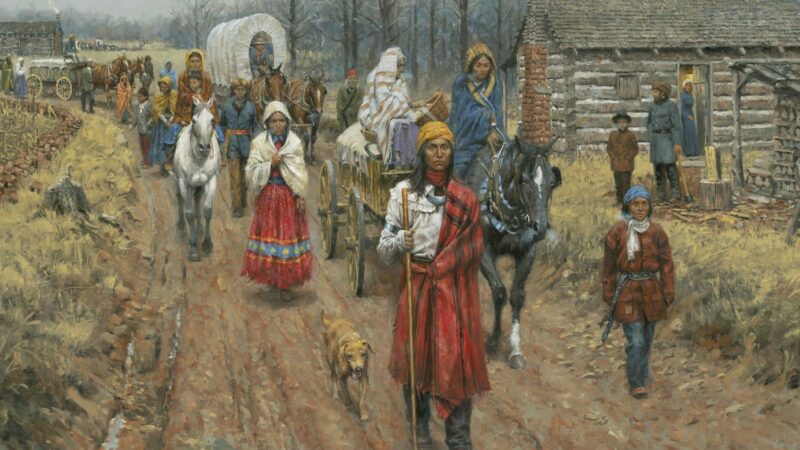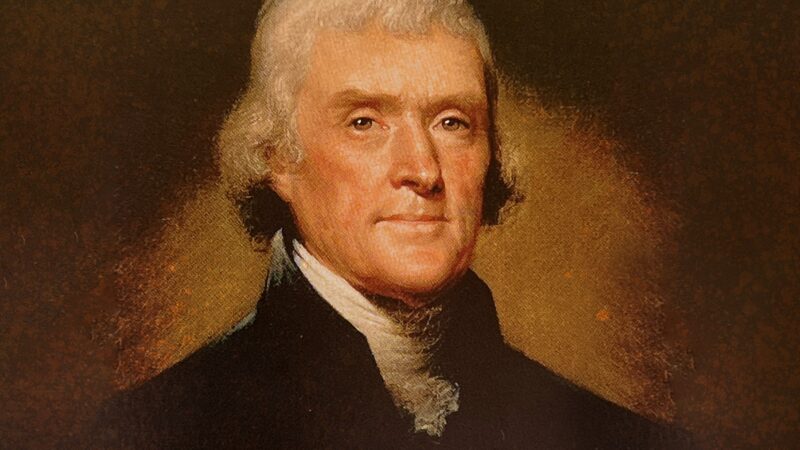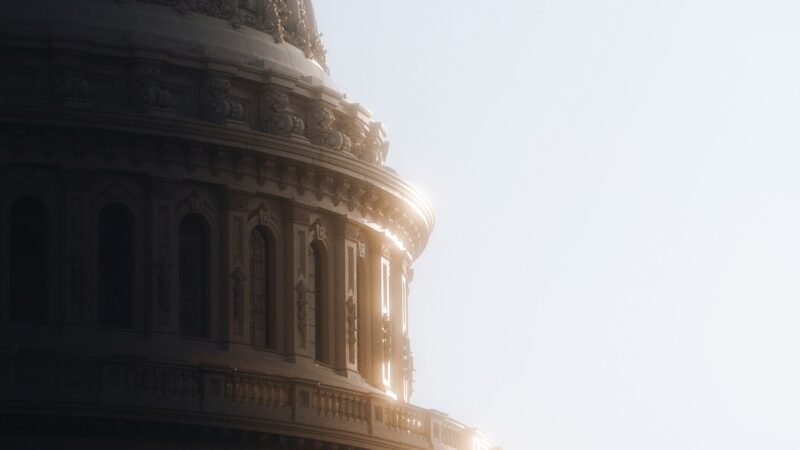A Friend on the Trail of Tears: How a Baptist Missionary Became a Cherokee
Evan Jones, a Baptist missionary to the Cherokee Indians, was one of the most steadfast missionaries in American history. Though largely forgotten today, the legacy of his labors through incredible turmoil and danger deserves a place among the annals of Baptist missionaries.
Born in Wales in 1788, Jones spent his early years as part of the Methodist Church. In 1821, however, he immigrated to Philadelphia, and soon after his arrival, he adopted Baptist principles and eventually became a teacher at a Baptist mission school among the Cherokees in North Carolina.
Inspired by the work of British Baptist missionary William Carey in India and the American Baptist Adoniram Judson in Burma, Baptists and other evangelicals began sending substantial numbers of missionaries to Native American groups in the 1810s and ’20s. Missionaries focused especially on tribes such as the Cherokees who showed interest in English-language education.
Jones took up this missionary endeavor, in 1824 becoming the leader of the Baptist mission to the Cherokees, a position he would hold for forty years. He soon found, however, that ministry to the Cherokees was complicated by cultural and political conflicts between the US and Indian tribes.
Friend of the Cherokees
Jones and his coworkers were appalled at the violent racism of whites in North Carolina and Georgia toward the Cherokees. Many local whites vehemently opposed efforts to educate or evangelize Indians, believing that Native Americans were incorrigibly dishonest and brutal. Typical of the era, Baptist missionaries had their own cultural biases. They often assumed that the Cherokees needed not only the gospel of salvation through Christ, but also “civilizing” in order to live decently as Christians.
Many southern whites opposed the mere notion of Indians becoming Christians. Jones claimed that some whites went so far as to tell Cherokees that the gospel of Christ was untrue and had nothing to do with Indians. Whites spread horrible rumors about Jones and his family whenever possible. Jones also met resistance from traditional Indian “conjurers” who warned the Cherokees not to betray their traditional animistic beliefs and rituals.
In contrast to his white detractors, Jones showed exceptional confidence in Cherokee assistants. Cherokees who became Christians helped him translate sermons and the Bible. Some of them became licensed Baptist preachers themselves. A key Cherokee pastor was Jesse Bushyhead, who converted to the Christian faith in 1829. Bushyhead, fluent in both Cherokee and English, became the pastor of a Cherokee Baptist church in 1831. In 1832, Jones met Bushyhead and was highly impressed with his aptitude for ministry. Jones convinced the national Baptist mission board to put Bushyhead on a regular salary as a missionary and evangelist.
Against Jackson
The conflicts between the US and the Cherokees culminated in the 1830s. In 1830, Baptists and all denominations serving among Native Americans began to confront the threat of Indian removal. President Andrew Jackson, elected in 1828, had fought Indians in the southern states as a military leader in the 1810s. He was determined to have all the remaining tribes in the southeast removed beyond the Mississippi. Proponents of Indian removal, including a number of white Baptist leaders, argued that whites and Indians could never live in peace, so it was better for everyone if Native Americans were moved to Indian territory (in Arkansas or Oklahoma).
The expansion of the southern Cotton Kingdom increased pressure to make all farmland in the Deep South open to white farmers and their enslaved African-American laborers. Most leaders of the Cherokees, headed by Principal Chief John Ross, opposed removal. Ross, Bushyhead, and Jones became close allies through the removal crisis. But even some Christian (though not Baptist) Cherokees believed that removal was inevitable, and that it was better to cooperate with the Jackson administration rather than risk violent removal.
Jones adamantly opposed the Jackson administration’s schemes. As a matter of Christian conviction and simple fairness, he believed that the Cherokees had a right to stay on their land. The number of Cherokee Baptists was growing rapidly in the early 1830s. Most white missionaries to Native Americans had seen only a few converts, but the Baptists saw the total of Cherokee converts grow from 90 to over 500 between 1830 and 1838. Jones not only worried about the physical danger to the Cherokees posed by removal, but he feared that it could devastate the burgeoning Cherokee churches.
Trail of Tears
A small group of compliant Cherokees signed the notorious Treaty of New Echota in 1835, committing the Cherokee nation to removal. Jones saw the treaty as a fraud, and he was briefly arrested for refusing to cooperate with federal officials sent to the Cherokee nation to arrange for removal. Jones and Bushyhead kept preaching to the Cherokees and baptizing dozens of new converts, even as government agents and militia moved in to orchestrate the deportation.
By spring of 1838, it was clear that forced removal was going to happen. John Ross reluctantly began to divide Cherokees up into regiments to make the deadly trek west. He chose Jesse Bushyhead to lead one of the contingents and made Jones the assistant commander of another. In June 1838, Jones wrote that government troops had dragged Cherokees from their houses, had rounded them up at detention camps, and had given them no opportunity to take anything but the clothes they wore.
Jones also reported that Cherokee believers were going on with their “labor of love to dying sinners,” continuing to baptize new Christians on the eve of deportation. Jones estimated that 175 Cherokees received baptism at the pre-march detention camps alone. The Baptist Missionary Magazine related that due to a “sudden outpouring of the Spirit,” Jones and Bushyhead baptized 55 converts on just one day during this scourging time.
Jones was one of a few white missionaries who accompanied the Cherokees on the forced trek to Oklahoma, which became known as the Trail of Tears. Bushyhead and Jones kept track of the Baptist Cherokees along the march and did their best to hold regular worship services. The fifteen thousand Cherokees forced to move to Oklahoma had disastrously poor supplies, and more than four thousand of them died on the Trail of Tears.
Scripture in Cherokee
In 1839, federal officials expelled Jones from Indian Territory due to renewed complaints and rumors about him spread by pro-removal Cherokees. But the indefatigable Jones successfully petitioned to return to the Cherokees after a two-year absence. Jones proved to be one of the most successful white missionaries ever to work among Native Americans, with some two thousand Cherokees joining Baptist churches under his ministry across the decades.
Bible translation into native dialects had long been a hallmark of Protestant missions. Jones and his son John translated the Bible into Cherokee using the new Cherokee alphabet developed by the linguist Sequoyah in 1821. As the Bible translation developed, Jones insisted on using the Cherokee version instead of the King James Bible in his mission schools, despite some opposition from Baptist missionary officials who thought it better for Cherokees to learn the Christian faith in English.
This openness to the Cherokee language was a key reason for Jones’s success. His translation of the Bible into Cherokee was a landmark of Cherokee linguistics and evangelization. John Jones had sufficiently mastered Hebrew and Greek to be able to translate the Bible directly from those languages into Cherokee, which removed much of the influence of English prose on their Cherokee translation. The Joneses also sought input from Cherokees to use Cherokee terms that best captured the meaning of the Greek and Hebrew words. Unsurprisingly, most Cherokee Christians were delighted with this work.
Bearer of Light
The last great controversy of Evan Jones’s career was over slavery and the Civil War. The Joneses came from the generally antislavery milieu of Northern Baptist life. In the 1850s, they appealed to Cherokee Baptists to oppose slavery and, where applicable, to free their slaves. (A number of wealthy Cherokees owned African-American laborers.)
Slave-owning Cherokees came to see the Jones family as troublemaking abolitionists, and they had John Jones expelled from Cherokee territory. Evan Jones, fearing for his safety, eventually left the Oklahoma territory again for the friendlier climes of Kansas. The Cherokees split over the Civil War, and the Joneses worked to support pro-Union Cherokees. Astoundingly, despite failing health and limited financial means, Evan Jones came back yet again to the shattered Cherokee nation once the war was over, laboring to restore and strengthen Cherokee Baptist churches.
At the end of the Civil War, Unionist Cherokee leaders took the unprecedented step of making Evan and John Jones full citizens of the Cherokee Nation. The Cherokees noted that the Jones family had served among the Cherokees for forty years. “When the Cherokees were poor and covered with darkness,” the Cherokees’ decree read, “light with regard to the other world was brought to us by Evan Jones.” Jones died in 1872, and was buried in Tahlequah, Oklahoma.1



